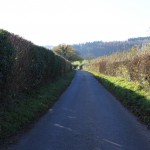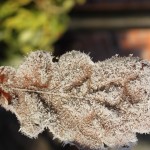Drug addict, sexual predator (or willing prey), absentee mother, Mystic Meg, groupie to Modernist giants: Mary Butts had a restless, scandalous career that yielded a small output of fiction and autobiography. Armed with Madness is the best-known of her novels, although that is not saying much. It was re-issued as recently as 2001 with a small fanfare of revival but has never found a large audience. No surprise there. Many of her sentences obey the rules of syntax but signify nothing. The characters are too elusive, or too privileged, to engage with. And the plot, involving a grail-like chalice, draws on Christian and folkloric themes with iffy associations. Yet one feels there is something worth searching for in the maze: a form of truth or of storytelling that might be archetypal, a tilt at the literal world and its limitations. Why do we read, after all? To understand and enjoy, of course, but sometimes to meet an intelligence stranger or more subtle than our own.
The setting is Dorset, where Butts herself was born, a county of hillforts and barrows, of tucked-away valleys and bald, sweeping downs. The uncanny survives here, a throwback to more superstitious times or, as she would have it, an age in contact with primal forces. A brother and sister, Scylla and Felix, live in a house near the sea with their old housekeeper – a sort of Brideshead avant la lettre. Along the coast Picus mucks in with Clarence, a war veteran haunted by his experiences. The two of them might be lovers; Scylla and Picus certainly are, or become so during the story. These names have mythological origins (Picus is the woodpecker, alter ego of Zeus, and so on). Sexual dimorphism, private means, a classical education: this is part avant-garde, part ancient régime.
Two events trigger the plot, such as it is. The chalice is found in the well at Clarence’s cottage and an American, Carston, disturbs the group’s personal chemistry. Sexual tension, a quest to find what the cup means, the volatile pathology of Clarence’s trauma: these elements are woven into an almost abstract design. The archness of the prose is tiresome at times, making us long for plain statements of feeling or fact. And along the way we encounter Butts’ hatred of materialism, which can be viewed as social critique, moral posture or the sour grapes of a landed class. Really, she belongs to a subset of modernists who disliked modernity. Throw in a hint of antisemitism and, yes, this is a hard and sometimes repellent read. Yet I found enough reasons to soldier on, beyond a cussed refusal to be beaten. Curiosity, for one. A wayward boldness of style. The strange, almost ritual quality of the interactions. In fact, when behaviour is explained in terms of normal motives it feels like a loss of nerve. Against all the odds, the fate of Butts’ characters contrives to matter – less for their own sakes than as a form of enquiry into love or life or . . . your guess is as good as mine.
Reading throws up curious juxtapositions. My next book after Armed with Madness is Julian Barnes’ The Noise of Time which examines the relationship between Art (personified by the composer, Shostakovich) and Power. I find that Butts’ novel still preys on my mind – a recommendation of sorts. It was written on the eve of the Depression, in a style guaranteed to be of no interest or relevance to the majority (a charge levelled against Modernism in general). And I imagine, in some mashed-up history of the period, Stalin denouncing her as elitist and degenerate, consigning the books and their writer to the flames. Art can be rarefied, self-serving, a smug, minority pursuit; yet when persecuted on these, or any other grounds it makes the strongest case possible for liberty.








